Waste Collection 2024
UMPSA demonstrates its strong commitment to responsible waste management and data-driven sustainability practices through the implementation of a comprehensive waste tracking system across the entire campus.
Developed in 2021, the Green Campus Management System, accessible via UMPSA’s official website, enables real-time monitoring, reporting, and evaluation of waste management performance at the departmental and institutional levels. This digital platform records detailed data on the amount of waste generated, recycled, composted, and disposed of, providing valuable insights for continuous improvement.
As a best practice, each faculty or department or centre updates its waste records regularly through the UMPSA portal, allowing UMPSA to analyze waste trends, identify high-impact areas, and implement targeted reduction strategies. The university also integrates performance dashboards, monthly reporting mechanisms, and awareness campaigns to encourage staff and students to participate actively in waste minimization efforts.
This systematic approach ensures transparency, accountability, and measurable progress toward achieving a low-waste, circular campus environment. By institutionalizing waste tracking, UMPSA not only strengthens its sustainability governance but also directly contributes to SDG 12.3 – Reduction of Waste Generation through Prevention, Reduction, Recycling, and Reuse.
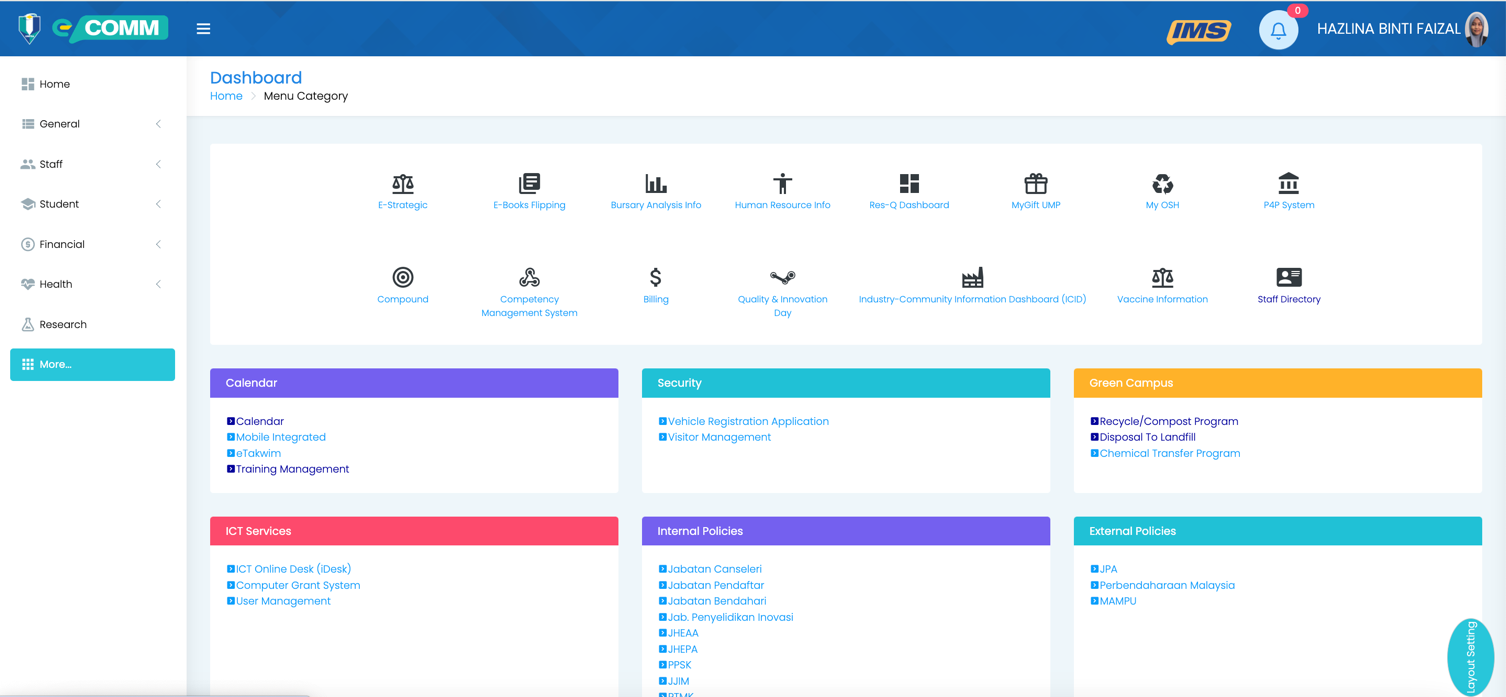
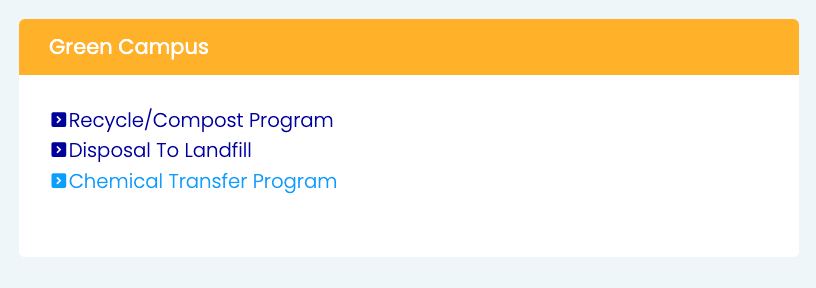
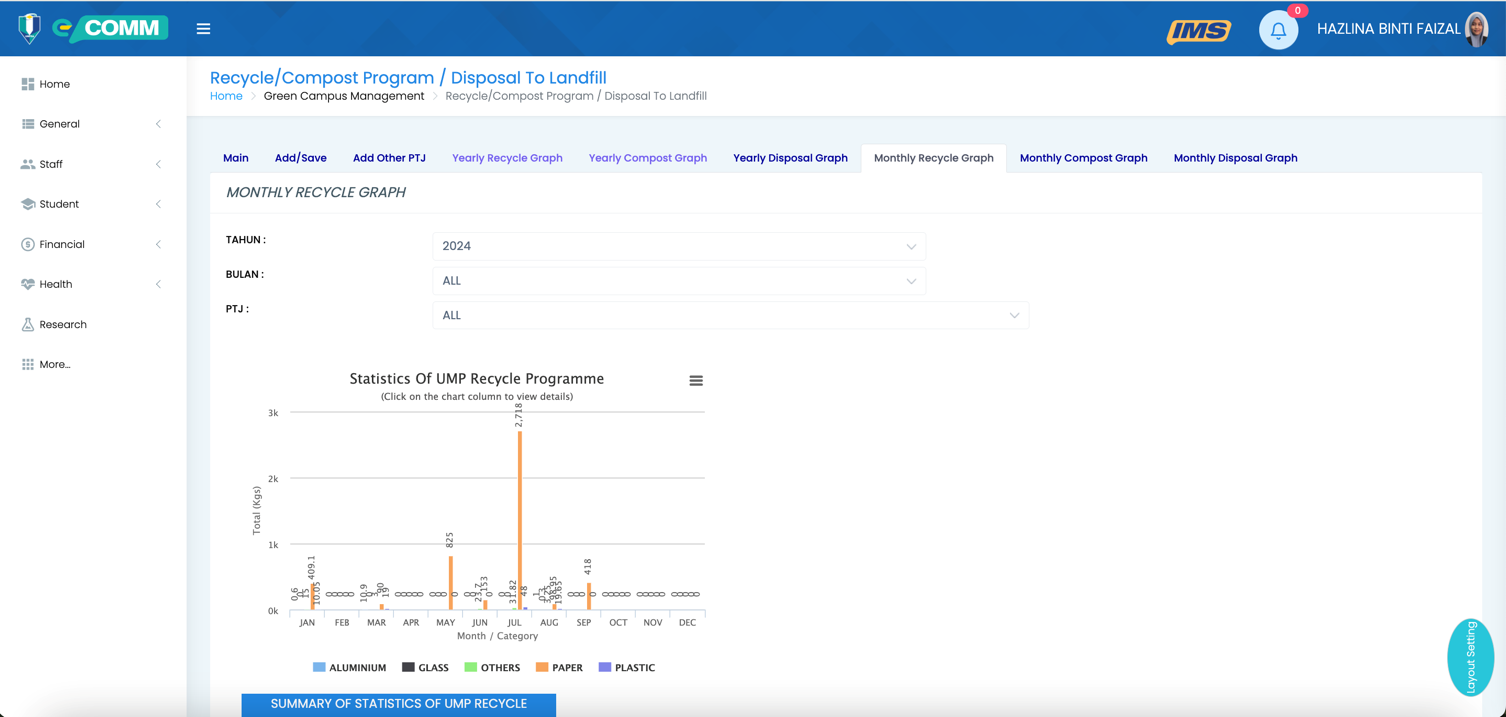
Figure 1: UMPSA Green Dashboard
In 2024, UMPSA intensified its commitment to sustainable waste management through the introduction of innovative organic waste treatment methods. These include composting for on-campus use as organic fertilizer, anaerobic digestion to generate biogas, and food waste segregation at the source to prevent contamination.
As a best practice, UMPSA complemented these measures with campus-wide awareness campaigns, collaboration with local recycling and waste treatment partners, and monitoring by the Sustainable Development Centre to ensure process efficiency. Through these integrated efforts, 86% of the waste generated in 2024 was successfully treated and recovered, significantly reducing the university’s environmental footprint and contributing directly to SDG 12.3 – Reduction of Waste Generation through Prevention, Reduction, Recycling, and Reuse.
Table 1: Total percentage of waste treatment in 2024
| DATA COLLECTED | QUANTITY (Metric ton) |
|---|---|
| Amount of organic waste generated | 105.09 |
| Amount of inorganic waste generated | 3,605.23 |
| Total amount of waste generated | 3,710.32 |
| Amount of organic waste recycled | 90.34 |
| Amount of inorganic waste recycled | 3,100.50 |
| Total amount of waste recycled | 3,190.84 |
| Total amount of waste sent to landfill | 519.48 |
| Recycling Rate (%) | 86% |
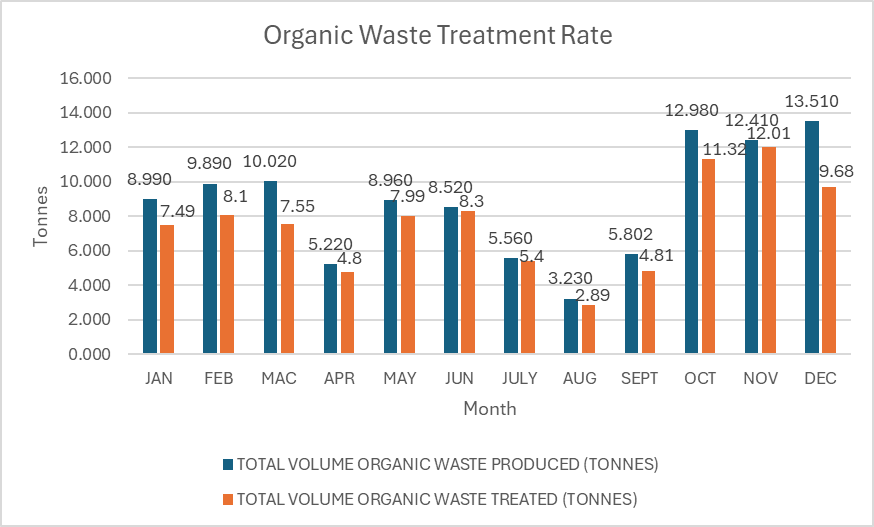
Figure 2: Organic Treatment Rate
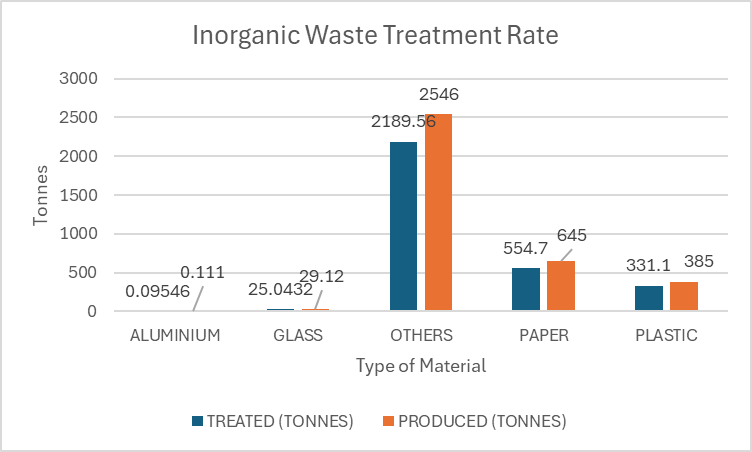
Figure 3: Inorganic Waste Rate

